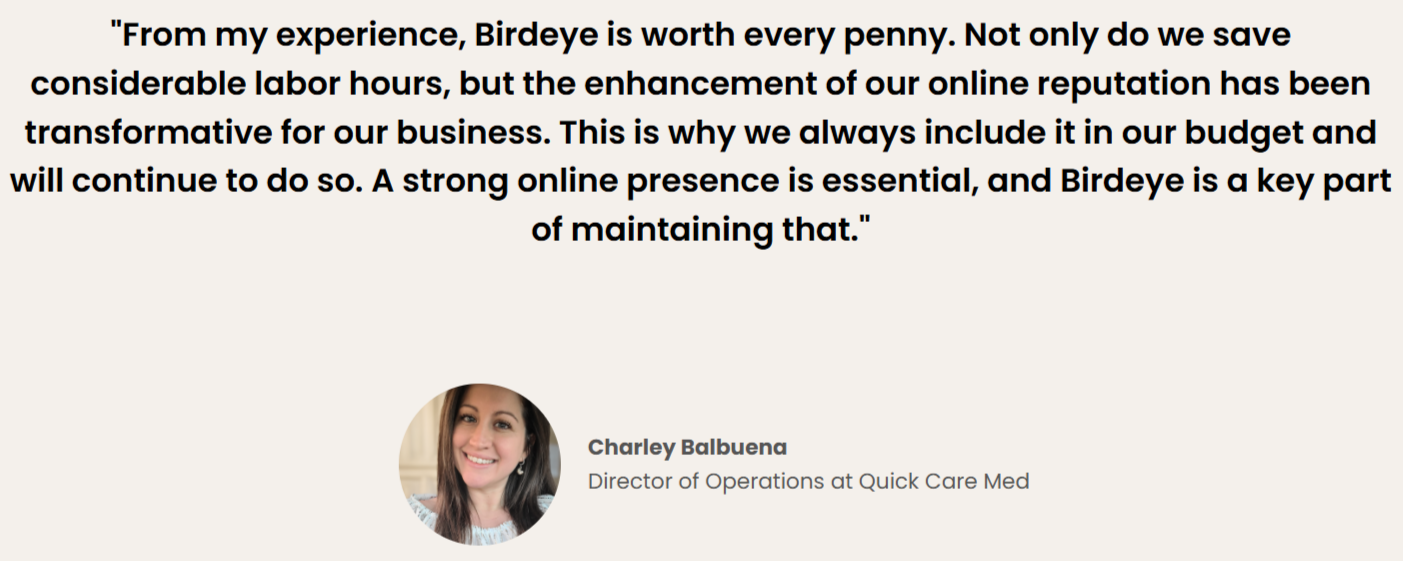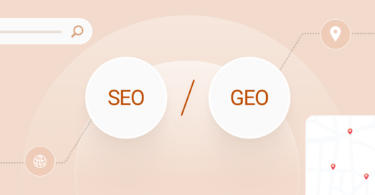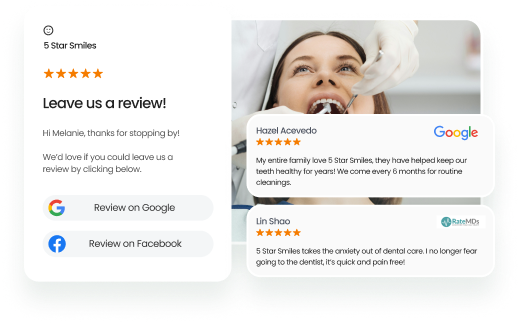Healthcare digital marketing has quietly become the first — and sometimes only — interaction between your clinic and potential patients.
It is no longer a “nice to have” — it’s the frontline of patient trust, acquisition, and loyalty. Today’s healthcare consumers expect seamless digital experiences, fast responses, and authentic, review-driven proof of care. Yet, many organizations still rely on outdated tactics, assuming their healthcare reputation management will be enough. But in today’s digital-first world, that approach risks losing patients before they even step into a clinic.
If your digital touchpoints are outdated, inconsistent, or impersonal, you’re already losing current and future patients—often without knowing it.
This blog isn’t about marketing tactics. It’s about the critical upgrades you must make in your healthcare digital marketing to meet rising patient expectations. We’ll also show how real clinics are taking action and break down the 7 upgrades your practice needs to deliver what modern patients demand.
The patient perspective 🩺
Patients don’t wait for brochures or callbacks anymore. They form impressions in seconds—on Google, on mobile, and in the moments you don’t control. Healthcare digital marketing in 2026 is about showing up ready: faster, more credible, and more human than ever before.
Table of contents
- Why healthcare digital marketing demands urgent upgrades in 2026?
- Why marketing in healthcare is challenging?
- How leading healthcare providers are modernizing their digital marketing
- Healthcare digital marketing checklist: 7 upgrades your patients expect in 2026
- How Birdeye’s GenAI tools help you deliver what patients expect
- How Quick Care Med transformed its digital strategy with Birdeye
- FAQs about healthcare digital marketing
- Birdeye helps you improve your healthcare digital marketing
At a glance: 7 Healthcare digital marketing upgrades your patients expect in 2026:
1. Optimize Google Business Profiles for every location and provider
2. Automate review requests and manage responses with GenAI
3. Publish condition-specific, SEO-friendly educational content
4. Shift from social promotion to real patient education and connection
5. Run HIPAA-compliant, hyperlocal Google Ads
6. Automate SMS and email for reminders, surveys, and patient outreach
7. Turn your website into a mobile-first, booking-focused experience
In this section of this blog, we'll discuss aboout them in detail, but before that, let's understand what's triggering the need for this upgrade.
Why healthcare digital marketing demands urgent upgrades in 2026?
Healthcare digital marketing is no longer about mere online visibility—it’s about using the right digital marketing tools to win the trust of modern healthcare consumers. Healthcare organizations must adopt an updated digital marketing strategy to stay competitive.
According to Birdeye’s 2024 State of Google Business Profile report, verified listings on Google average 1,803 monthly views and drive 48% of those views to website visits. Yet only 64% of healthcare organizations have verified their profiles. This gap shows that even well-established healthcare providers risk losing potential patients if they ignore effective digital marketing for healthcare.
Additionally, Birdeye’s 2024 State of Online Reviews report reveals that 60% of review requests are sent via email and 42% of review responses are automated using GenAI—proving that modern digital marketing strategy now leverages digital channels over traditional marketing channels. For healthcare marketers and healthcare professionals, these healthcare marketing strategies indicate that robust patient engagement through social media marketing and other digital platforms is essential.
Moreover, current marketing strategies indicate that optimizing for search engines and ensuring a strong digital presence are key to converting visits into real appointments. In summary, to drive patient engagement, increase patient acquisition, and deliver relevant content that resonates, every aspect of your digital marketing in healthcare must be upgraded.
But understanding the data is one thing—acting on it is another. While many industries can pivot their digital marketing strategies quickly, the healthcare industry faces deeper, more complex barriers. Between compliance requirements, fragmented systems, and evolving patient expectations, digital upgrades aren’t just urgent—they’re uniquely difficult. That’s exactly what we’ll explore next.
Why marketing in healthcare is challenging?
Delivering a modern healthcare digital marketing strategy isn’t just about applying general best practices—it’s about navigating an environment that demands precision, regulation, and human sensitivity. That’s what makes marketing in the healthcare industry uniquely high-stakes.
1. HIPAA compliance and patient privacy concerns
Healthcare marketing teams must adhere to strict data privacy regulations, which often limit the personalization and targeting capabilities common in other sectors. Even the simplest email or review response must consider patient privacy and consent.
2. Fragmented digital infrastructure
Many healthcare organizations use disconnected systems—one for reviews, another for messaging, a third for website management. This siloed approach slows down execution and hurts the patient experience. It also makes it harder to measure the ROI of marketing efforts across digital platforms.
3. The trust barrier is higher
In healthcare, trust isn’t a branding exercise—it’s a prerequisite. Potential patients scrutinize online reviews, response times, and reputation signals far more closely than in other industries. A missed message or outdated listing can erode confidence instantly.
4. One-size-fits-all doesn’t work
Specific patient demographics require tailored messaging, localized content, and unique channel strategies. This means highly personalized campaigns are essential, but difficult to execute at scale without the right tools.
5. Human sensitivity is non-negotiable
Healthcare messaging must balance professionalism, empathy, and accessibility. That makes generic templates or robotic automation a liability unless powered by patient-aware GenAI solutions.
Despite these challenges, some healthcare providers are not just adapting—they’re thriving. What sets them apart isn't luck or larger budgets. It's clarity of focus, smarter systems, and a patient-first mindset. Let’s take a closer look at how modern providers are evolving their digital marketing strategies to meet real expectations.
How leading healthcare providers are modernizing their digital marketing
Top-performing healthcare providers aren’t simply throwing money at ads—they’re rethinking the entire patient experience online. Their success lies in aligning operational excellence with digital credibility, using digital marketing tools that not only improve visibility but also deepen trust. Here are the top five steps they’re taking:
1. From brand-first to trust-first
Modern providers know that building a strong brand is less about logos and more about transparent reviews, accurate listings, and fast, thoughtful engagement. Their marketing strategies now revolve around managing trust signals across digital channels.
2. From fragmented systems to a unified digital strategy
Instead of juggling disconnected tools, they use unified digital platforms to manage listings, reviews, social media posts, and messaging in one place. This improves team efficiency and ensures a consistent voice across every interaction.
3. From content overload to patient education
Rather than producing generic blogs, these providers focus on patient education—answering real questions, guiding decision-making, and creating educational content tied to services, symptoms, or care plans.
4. From one-time transactions to full patient journey support
Successful practices don’t stop at conversion—they optimize each step of the patient journey, from appointment booking to follow-up messaging. This continuity builds long-term positive brand perception and increases patient lifetime value.
5. From manual outreach to GenAI-powered personalization
By using GenAI platforms like Birdeye, providers are automating email campaigns, response management, and surveys—all while staying compliant with HIPAA regulations. This allows for patient and physician engagement that feels human, not robotic.
It’s clear that the providers leading the pack aren’t doing more—they’re doing it smarter. What patients now expect isn’t just convenience, but connection. Trust-building begins online, and every digital interaction plays a role. So, what does delivering on those expectations actually look like?
Healthcare digital marketing checklist: 7 upgrades your patients expect in 2026
Modern healthcare consumers aren’t just judging you by your qualifications—they’re judging you by your website speed, your Google reviews, and how fast you reply to a message. This checklist isn’t just a list of tactics—it’s your seven-step guide to aligning your digital presence with what real healthcare consumers now demand. Each upgrade below is based on actual behavior shifts, patient needs, and proven success across modern healthcare organizations.
You don’t need to implement all of them at once. But each step you take toward this checklist moves you closer to a smarter, more patient-first healthcare digital marketing strategy.
Upgrade 1: Optimize Google Business Profiles for every location and provider
Most patients never visit your website first—they Google you. And what they find in that listing determines if they click, call, or keep scrolling. So:
- Build individual Google Business Profiles for every provider and practice location.
- Include accepted insurance, appointment links, photos, bios, and patient testimonials.
- Regularly update your hours and add wellness tips through GBP posts to build trus.t
- Use a centralized tool like Birdeye Listings AI to manage profiles across Google, Apple, Bing, and Facebook while tracking keyword rankings to improve visibility.
Remember: consistency across your listings improves trust signals on search engines
Upgrade 2: Automate review requests and manage responses with GenAI
Patients expect acknowledgment. How fast you respond—and how human it sounds—affects their perception more than you think.
- Automate review requests using integrated CRM or email marketing workflows.
- Use Birdeye Reviews AI to generate smart, HIPAA-safe, multilingual review responses in seconds.
- Let GenAI summarize themes and highlight issues through review insights.
- Address feedback in real time while reinforcing credibility through consistent marketing strategies.
Upgrade 3: Publish condition-specific, SEO-friendly educational content
Patients Google symptoms before they ever call you. Your voice should be part of the answer.
- Write localized, high-intent educational content tied to real services (e.g., “root canal or extraction?”).
- Optimize for search engine optimization using schema, FAQs, and structured content.
- Adapt tone and content to specific patient demographics (age, language, urgency).
- Treat content like a long-game digital strategy, not just a blog post.
Upgrade 4: Shift from social promotion to real patient education and connection
Your social feed is either building trust—or making noise. Most patients follow for relevance, not aesthetics.
- Share health explainers, FAQs, and patient stories that reduce uncertainty.
- Use Birdeye Social AI to generate compliant, personalized social media posts at scale, optimized for each location and platform.
- Replace generic updates with informative threads or short videos that clarify the care process.
- Build a plan rooted in social media marketing strategy, not just presence.
Upgrade 5: Run HIPAA-compliant, hyperlocal Google Ads
If you’re running ads without localized intent or compliance controls, you’re wasting money—and risking trust.
- Target high-intent keywords by specialty and location (“orthodontist near me with weekend hours”).
- Use Google Business Profile analytics to refine which services or locations are converting best.
- Optimize campaigns based on target audience needs and device preferences.
- Align messaging with regulations, using tools that protect data privacy regulations.
Upgrade 6: Automate SMS and email for reminders, surveys, and patient outreach
Manual patient communication leads to no-shows, dropped appointments, and frustrated staff.
- Trigger auto-reminders and feedback surveys via SMS or email marketing.
- Use personalized journeys for follow-ups, health tips, and review generation.
- Platforms like Messaging AI help ensure omnichannel patient outreach while respecting patient data.
- Automate without losing human touch through thoughtful sequences.
Upgrade 7: Turn your website into a mobile-first, booking-focused experience
A polished site is no longer a differentiator—it’s expected. What matters is speed, booking ease, and clarity.
- Make your site lightning-fast, mobile-friendly, and accessible on all mobile devices.
- Showcase patient satisfaction stats, ratings, awards, and booking CTAs above the fold.
- Leverage Birdeye Insights AI to identify weak spots in conversion, navigation, and listings consistency.
- Treat your website as your digital front desk—make it helpful and human.
What separates clinics that know what to do from those that actually do it, is having the right tools. That’s where AI comes in. Let’s take a look at how Birdeye’s GenAI tools make these upgrades not just possible—but scalable, consistent, and surprisingly simple.
How Birdeye’s GenAI tools help you deliver what patients expect
Meeting modern patient expectations across your digital marketing stack isn’t just about effort—it’s about having the right system behind it. Manual processes can only get you so far. To scale patient engagement across listings, reviews, messaging, and social media, modern healthcare marketers are turning to GenAI tools that deliver speed, consistency, and compliance.
Here’s how Birdeye helps you transform each digital touchpoint:
Listings AI: Keep your profiles accurate and everywhere
Patients expect your practice information to be up-to-date across every search platform—from Google to Apple Maps. Birdeye Listings AI helps you manage all business listings across locations from one central dashboard. It ensures consistency, boosts your local SEO, and provides actionable insights to improve online discoverability.
- Automatically sync profiles across Google, Bing, Facebook, Apple
- Push updates in real-time for hours, services, and insurance accepted
- Track keyword rankings and listing performance over time
- Improve visibility where 90% of internet users search
Reviews AI: Build trust and credibility faster
Reviews are a deal-maker or breaker for today’s healthcare consumer. Birdeye Reviews AI helps you automate collection, monitor sentiment, and respond at scale—all without losing the human touch.
- ✔ Auto-send review requests via SMS, email, or QR code
- ✔ Respond instantly with AI-crafted, personalized replies
- ✔ Translate reviews and responses into multiple languages
- ✔ Analyze sentiment trends to improve patient care and experience
Social AI: Engage your audience with zero stress
If social feels like a full-time job, you’re not alone. Birdeye Social AI removes the heavy lifting by helping you plan, create, and publish content across every location.
- ✔ Generate AI-written, channel-optimized social media posts
- ✔ Schedule and bulk-publish across regions
- ✔ Get smart posting time suggestions to increase visibility
- ✔ Pull review snippets into posts to showcase trust in real time
Insights AI: Make smarter, faster decisions with real data
Guesswork isn’t a strategy. With Birdeye Insights AI, you get clear, actionable visibility into your digital performance—so you can fix what’s broken, double down on what’s working, and keep pace with what your target audience actually wants.
- ✔ Benchmark performance across locations and industries
- ✔ View sentiment analysis, reputation trends, and local SEO metrics
- ✔ Get AI-powered recommendations on how to improve
- ✔ Share insights across your marketing team with just one click
How Quick Care Med transformed its digital strategy with Birdeye
With nine locations and a mission to deliver accessible, high-quality care at affordable rates, Quick Care Med focuses on operational efficiency, patient satisfaction, and tech-enabled growth. Their goal? To set new standards in healthcare digital marketing while preparing to scale nationally.
Challenge: Disconnected digital presence and missed patient opportunities
Despite a strong clinical model, Quick Care Med faced challenges with fragmented listings, inconsistent information across platforms, and manual review management. With patient journeys increasingly starting online, the team recognized that their outdated approach was limiting both visibility and trust.
They needed a better way to:
- Ensure listing accuracy across platforms like Google, Bing, and Facebook
- Automate the collection and response of patient reviews
- Improve SEO performance and search rankings
- Support their growing footprint without adding manual workload
Solution: Centralized control and automation through Birdeye
Quick Care Med implemented Birdeye Listings AI, Reviews AI, and Webchat to overhaul their online presence. These tools allowed the team to modernize patient interactions while improving discoverability and operational efficiency.

Results: Greater reach, more reviews, and stronger brand credibility
The results speak for themselves. Quick Care Med saw dramatic improvements in visibility, engagement, and patient perception:
- 98.5K Google Maps mobile impressions
- 94.7K call clicks from search listings
- 24.7K Facebook interactions
- 15.3K patient reviews with a 4.6-star average rating
- 81.18% of web traffic now originates from Google
Beyond patient outcomes, the digital transformation also enhanced employee attraction. Doctors and nurses cited online reviews as a key factor in applying—turning reputation into a recruitment advantage.

Even with the right checklist and strategy in place, executing consistently across channels and locations requires more than good intentions—it requires infrastructure. That’s why choosing the right platform or agency isn’t a marketing decision; it’s an operational one. The wrong partner will slow you down. The right one will turn digital expectations into everyday wins.
What to look for in a healthcare marketing platform or agency
If you’re evaluating a vendor, don’t just ask, “What can it do?” Ask: “Can it scale across teams, support compliance, and deliver consistent results in the healthcare space?”
Most platforms are built for eCommerce, not for the realities of health systems, healthcare organizations, and medical practices juggling compliance, care delivery, and communication.
Here’s what to look for:
1. Experience in healthcare
Choose a provider that deeply understands the healthcare industry, healthcare services, and how digital marketing for healthcare must align with compliance, patient experience, and trust-building.
- Ask for examples from multi-location healthcare practices or healthcare providers like yours.
- Ensure they know how to speak to new patients and handle niche health-related information responsibly.
2. HIPAA compliance built in
A platform that doesn’t build for HIPAA compliance from the ground up isn’t built for healthcare. Period.
- Review how they handle patient data, review responses, and patient interactions.
- Ask about how they manage patient portals, user roles, and audit trails.
3. A full-stack, integrated toolset
Look for platforms that consolidate your core digital marketing channels into one workflow: listings, reviews, social media, email, messaging, and analytics.
- This reduces friction across your marketing team and increases efficiency
- Bonus if they offer digital tools for content marketing, campaign reporting, or competitive benchmarking
4. Performance clarity and actionable insights
A great platform doesn’t just collect data—it turns it into decisions.
- Look for AI tools that surface key trends, rankings, sentiment, and ROI
- Choose vendors who highlight effective digital marketing strategies and back them with real metrics
5. Local SEO and reputation expertise
If a vendor can’t explain the difference between healthcare SEO and generic SEO, walk away.
- Choose a partner who can improve your local rankings through optimized listings and reviews
- They should also understand social media platforms and what works for medical audiences
6. Scalable for multi-location, omnichannel campaigns
You need a system that works whether you manage one location or a hundred.
- Look for options that offer scheduling, automation, and personalization across social media platforms, SMS, and email marketing
- Bonus if the platform helps you with increasing brand awareness and patient acquisition
FAQs about healthcare digital marketing
Healthcare digital marketing is the use of digital marketing channels like SEO, reviews, listings, social media, and email to attract, engage, and retain new patients.
Effective digital marketing strategies include local SEO, content marketing, reviews, and social media platforms to build trust and drive patient acquisition.
Digital marketing in healthcare must comply with HIPAA, protect patient data, and deliver accurate health related information across platforms while building trust.
Use tools designed for healthcare marketers—with built-in HIPAA compliance, review management, patient portals, and clear insights into patient interactions.
Healthcare organizations need AI-powered digital tools to scale messaging, update listings, and personalize care journeys—especially for multi-location health systems.
Birdeye helps you improve your healthcare digital marketing
Upgrading your healthcare digital marketing isn’t just about ranking higher—it’s about building trust, reducing friction, and meeting patients where they are. Every online touchpoint, from listings and reviews to emails and social posts, influences how new patients perceive your care.
That’s why Birdeye is more than a marketing platform—it’s a growth engine for healthcare providers. With Listings AI, Reviews AI, Social AI, and Insights AI, Birdeye helps multi-location practices manage everything from patient engagement to online visibility—all while staying compliant and consistent.
Ready to turn online interactions into real-world loyalty?
👉 Book your free demo and see how Birdeye helps you lead with smarter, faster, and patient-first digital marketing.

Originally published




![[Feature image ] Customer-centric marketing- how to win, retain, and grow your customer base in 2025](https://birdeye.com/blog/wp-content/uploads/Feature-image-Customer-centric-marketing-how-to-win-retain-and-grow-your-customer-base-in-2025-375x195.jpg)




